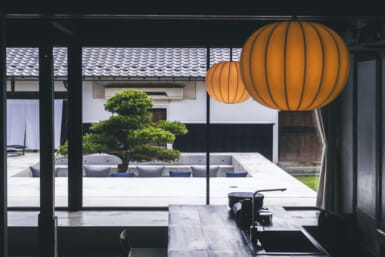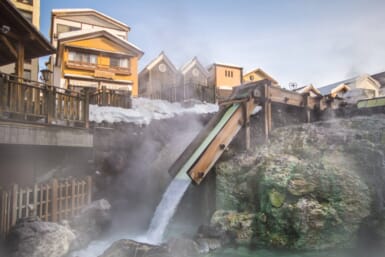by Elyse M. Rogers
Profile of Tokyo Dentist
KAZUMI IKEDA, D.D.S.
With more ex-pat families moving into Japan with younger children, the problem of needing an orthodontist is becoming more common. So, it was with pleasure that I received a recommendation from reader Angie Huse and went to visit Dr. Kazumi Ikeda, a well-qualified orthodontist who has an office near Nakameguro Station.
BACKGROUND ON DR. IKEDA
In addition to his good knowledge of English and a Western-type orthodontic office, the doctor has fine academic credentials and experience that will be of interest.
- Graduate of Nihon University School of Dentistry in 1979.
- Certificate in Orthodontics from the University of Pennsylvania, where he attended from 1979-1981.
- Certificate from the Foundation for Advanced Continuing Education in San Francisco, in 1987. (The doctor went to the States every four months for programs from 1985-1987.)
- Practicing orthodontics in Asakusa since 1981.
- Opened his new Hillside View Orthodontic Office in August of 1987.
It’s interesting to note that his wife is also a dentist, and she now runs the Asakusa office when husband Dr. Ikeda is at the new office.
OFFICE AMBIENCE & LAYOUT
The office is certainly a handsome one, and very spacious. The view from the waiting area (and it truly is a waiting area set aside, not simply a spot in the hall) is a good one, if you enjoy overlooking the city as much as I do. From its 10th floor location you get a good view looking towards Nakameguro.
The elevator opens right into the office and you simply step up to the reception desk and ask to see the doctor. The staff is working on learning English, but if you can’t speak Japanese, ask to speak to Dr. Ikeda directly, and he will happily take care of you.
In back of the reception desk and waiting area (and small lavatory), is the clinical area. There are three very new, up-to-date dental chairs (“totally equipped” as the doctor says) in three separate areas. There’s also a work room for making teeth molds, a room for storage and sterilization of instruments, and an area where the computer is housed.
I should mention that the doctor is extremely finicky about sterilizing and disinfecting instruments between patients. Since this is so important today, with all the new problems that can be transmitted via the mouth and open wounds, let me mention his system.
First, any used instrument is put directly into a disinfectant bath (at chairside). Then it is taken to be washed, autoclaved (sterilized under steam), and then finally put into a cabinet with ultra-violet light.
ORTHODONTIC PROCEDURE
For those bringing children to the doctor for routine orthodonture (usually between ages 11 and 13), the doctor’s program works like this:
1) Initial visit. This is the time when the parent explains why he/she feels the child needs orthodonture and the doctor discusses just what orthodonture will and won’t do.
2) Work-up session. The doctor examines the patient and docs a complete work-up including medical history, dental history, X-rays of both the teeth and the head (cephalometrics). An impression of the teeth and gums is also taken.
3) Orthodontic diagnosis and treatment plan. After the examination is completed, the doctor looks at all the X-rays, makes a model of the teeth and puts that model on a devise called the “articulator” which shows the present alignment between teeth, jaw and transmandibular joint (TMJ). (This is important to prevent future TMJ problems so prevalent today.)
Finally, the doctor computerizes all the material and has special soft-ware to compare the patient’s profile with the projected normal profile after proper orthodonture.
4) Review with the patient. When the doctor has completed this preliminary work, he talks again with the patient and parents and explains the program and the results to be expected.
Dr. Ikeda uses the computer print-out with its fine graphics to help the lay person understand the whole orthodontic process that is planned. The doctor will explain the type of participation that will be needed on the part of the patient, including good oral hygiene, keeping to the appointment schedule, wearing a retainer after the program is completed, etc.
After this discussion the decision to actually begin orthodonture is (or is not) agreed upon.
5) The orthodontic program. The actually applying, wearing, and adjusting of braces takes an average of 20-24 months, with constant retainer-wearing for about six months after, and then night-time retainer wearing for about another six months.
I’ve been using the child’s program as an example since orthodontics for children is most common: however, adult orthodonture is also becoming popular and the doctor treats adults as well. The program is similar, although the time element may vary for adults.
COST OF TREATMENT
Unfortunately, since orthodonture is a long-term program, the treatment is costly. Because of endaka the programs in Japan have become more expensive than they used to be for foreigners. But then just plain living in Tokyo is far more expensive, as we all know, and I’ve been told by patients who have comparison shopped that the doctor’s costs are lower than most.
The doctor was kind enough to give me estimated or average costs, but stressed that individual treatment program costs may be lower or higher.
• Initial consultation fee, ¥5,000.
• Work-up fee, ¥40,000.
• When braces are applied, ¥240,000.
• Monthly payment, ¥25,000.
The total fee will run (everything included) about ¥750,000. But this fee does include a five year follow-up program.
FOR REFERRED PATIENTS OR ONGOING CARE
One fine service Dr. Ikeda provides is to offer ongoing care to those foreigners who arrive in Tokyo with braces already in place. I mention this service since it is difficult to find, as many orthodontists want to treat only those patients who begin and end the program under their care. Dr. Ikeda sees such patients monthly, and they pay the same monthly treatment fee as his regular patients—¥25,000.
MONTHLY VISITS
On the regular monthly visits the doctor examines the patient, adjusts the braces if necessary and makes sure the program is working correctly. Every good orthodontist does that.
In addition, Dr. Ikeda offers an extra service of professional teeth cleaning on each visit. “We’ve found that if we professionally clean the teeth each time,” he told me, “the teeth and gums remain healthier and the patient can maintain good oral hygiene more easily.”
I was pleased to hear of that service since there was a time when orthodontists were so specialized they worried only about the braces and tooth alignment and seemed to forget that the teeth were part of a larger structure, and that the purpose of the treatment was not only to produce a nice smile but to insure good oral hygiene and gum health as well.
OFFICE HOURS & LOCATION
Because the lkedas maintain two offices, the office hours at Hillside View are a bit limited. Still, since all visits are by appointments only, this shouldn’t be a problem. There are no evening office hours, but the Saturday hours are generous ones for those who can’t come during weekdays. Hours are as follows: Monday, Tuesday. Friday and Saturday from 10 a.m. to 1 p.m.. and 2 p.m. to 6 p.m. (Closed Wednesday. Thursday and Sunday).
The office is actually easy to find once you know its location, (the area is called Daikanyama) but hard to find by its address. (My taxi driver took me all through the back streets until I finally convinced him to go to the main road—and we found the building.) It’s about a five-minute walk from Nakameguro Station (Hibiya-sen) at the junction of Kyu Yamate Dori and Komazawa Dori. But call the office and have them send you a map.
Hillside View Orthodontic Office, No. 2 Ikura Building, 10F, 1-1-5 Kamimeguro, Meguro-ku, Tokyo 153. Phone 710-7447, www.hillsideview.com.








